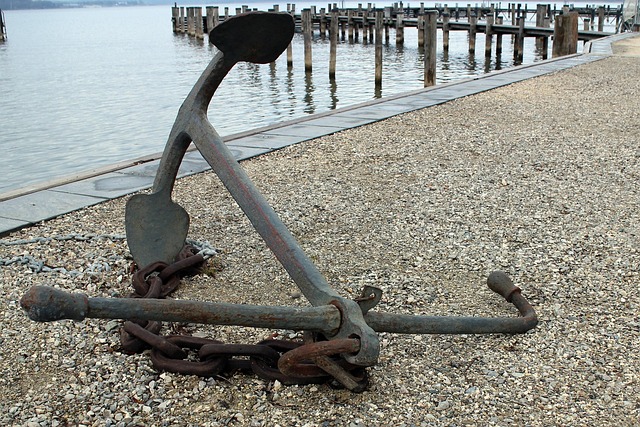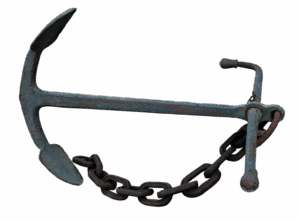Internal linking, a vital SEO strategy, boosts website navigation and accessibility by creating relevant hyperlinks within sites. Optimizing anchor text—using descriptive, keyword-rich phrases that accurately represent linked content—improves user experience and guides search engines through the site's structure. This approach leads to better rankings, increased visibility, and higher organic traffic for content-rich websites. Effective strategies balance keyword usage with natural language flow, diversify anchor text variations, and incorporate branded terms. Regular analysis using tools like Google Analytics is essential to track KPIs like CTRs, time on page, and bounce rates, enabling adjustments to optimize anchor text and enhance overall SEO performance.
In the competitive digital landscape, mastering internal linking is key to boosting your site’s visibility. This comprehensive guide dives into the art of optimizing internal links on content-heavy platforms, focusing on leveraging optimize anchor text for enhanced SEO performance. By understanding the impact of internal linking and implementing strategic practices, you can create a powerful network that drives user engagement and improves search engine rankings.
- Understanding Internal Linking and Its Impact on SEO
- The Role of Optimize Anchor Text in Effective Internal Links
- Strategies for Creating Engaging and Relevant Anchor Text
- Implementing Internal Linking on Content-Heavy Sites Step-by-Step
- Measuring and Analyzing the Success of Your Internal Link Strategy
- Best Practices for Continuous Optimization of Internal Links
Understanding Internal Linking and Its Impact on SEO

Internal linking is a powerful strategy that plays a pivotal role in enhancing search engine optimization (SEO) for content-rich websites. It involves creating hyperlinks between pages within your site, which serves multiple purposes. By strategically placing links, you guide users and search engines through your content, improving navigation and accessibility. When done right, internal linking can significantly impact your website’s SEO performance.
The key to effective internal linking lies in optimizing anchor text. Anchor text refers to the visible label or link text that users click on. Using relevant, descriptive, and contextually appropriate anchor text is essential for both user experience and search engine understanding. An optimize anchor text strategy involves carefully choosing keywords or phrases that accurately represent the linked content, thereby increasing the chances of ranking higher in search results. This practice ensures that your website’s architecture is not only user-friendly but also search engine-friendly, leading to better visibility and organic traffic for content-heavy sites.
The Role of Optimize Anchor Text in Effective Internal Links

In the realm of internal linking, optimize anchor text plays a pivotal role in enhancing search engine visibility and user experience. The anchor text, which is the clickable portion of a link, should be carefully crafted to reflect the target page’s content accurately. By using descriptive and relevant keywords within the anchor text, you not only assist search engines in understanding the context but also provide users with a clear indication of what they can expect to find when clicking on the link. This strategy is crucial for optimizing anchor text SEO, as it contributes to better indexing and increased click-through rates.
An effective optimize anchor text strategy involves balancing keyword usage with natural language flow. While incorporating relevant keywords is essential for SEO optimization, the anchor text should still read naturally within the context of your content. Diversifying anchor text variations, including branded terms, partial matches, and generic words like “learn more” or “read this,” can further improve the overall optimize anchor text optimization. This approach not only boosts search engine rankings but also fosters a seamless user journey across your content-heavy site.
Strategies for Creating Engaging and Relevant Anchor Text

Creating engaging and relevant anchor text is a crucial aspect of successful SEO internal linking. When crafting anchor text, focus on using keywords that naturally fit within the context of the surrounding content. For instance, instead of generic phrases like “click here,” use specific terms that accurately describe the linked page’s topic. An optimize anchor text tutorial or strategy can guide you in identifying keyphrases that both enhance user experience and signal search engines about the relevance of the destination page.
To optimize anchor text effectively, consider using a variety of formats. Short, precise keywords work well for direct links within sentences. Longer phrases that mimic user search queries are ideal for menu items or category pages. Additionally, incorporating branded terms in anchor text can improve site recognition and link juice distribution. Remember, the goal is to create a seamless reading experience while subtly guiding users and search algorithms to relevant content across your site.
Implementing Internal Linking on Content-Heavy Sites Step-by-Step

Implementing internal linking on content-heavy sites involves a strategic approach to enhance user experience and boost SEO. Start by identifying key topics and relevant pages within your site. Next, analyze existing content to determine which articles can benefit from internal links—look for instances where you can provide additional context or direct readers to related resources. When creating new content, naturally incorporate relevant internal links using optimized anchor text. This not only improves navigation but also signals search engines about the relationships between pages.
For an effective optimize anchor text SEO strategy, consider using specific and descriptive keywords in your link text that accurately reflect the linked page’s content. Avoid generic phrases like “click here” or “read more.” Instead, opt for tailored anchor text that conveys the value of the destination page. This optimized anchor text optimization ensures both user satisfaction and better search engine comprehension, ultimately contributing to improved site visibility and performance.
Measuring and Analyzing the Success of Your Internal Link Strategy

After implementing your SEO internal linking strategy, it’s crucial to measure and analyze its success. This involves tracking key performance indicators (KPIs) such as click-through rates (CTRs), time on page, and bounce rates for pages with internal links. Tools like Google Analytics can help you monitor these metrics, providing valuable insights into how users are interacting with your content.
By evaluating the effectiveness of your optimize anchor text strategy, you can identify high-performing and underperforming pages. This analysis will guide you in refining your optimization approach, ensuring that anchor texts are not only relevant but also accurately reflect the target page’s content. A well-optimized anchor text tutorial suggests using descriptive, unique, and contextually relevant phrases to enhance both user experience and search engine understanding of your site’s structure.
Best Practices for Continuous Optimization of Internal Links

Implementing an effective internal linking strategy involves continuous optimization, especially on content-rich sites. One of the best practices is to focus on optimizing anchor text. This means using descriptive and relevant keywords in your links that accurately represent the target page’s content. By incorporating these keywords naturally, you enhance both user experience and search engine understanding. For instance, instead of generic anchors like “click here,” use phrases like “read more about SEO optimization” or “discover our latest content strategy.”
Regularly reviewing and updating internal links is crucial. This process allows you to refine optimize anchor text strategies based on content updates, new page additions, and user behavior. Tools like broken link checkers can assist in identifying outdated or missing links, ensuring your site remains a valuable resource. Remember, an optimized anchor text strategy contributes to better click-through rates, reduced bounce rates, and improved search engine rankings, ultimately enhancing the overall SEO performance of your content-heavy site.
